Hatchery production and research to support restoration of sustainable coregonine populations in Lake Ontario
Contributing Authors
Meredith Bartron (USFWS, meredith_bartron@fws.gov), Mike Millard (USFWS), Larry Miller (USFWS), and Bill Archambault (USFWS)
Executive Summary
This project focuses on the production of Coregonines at the USFWS-ANFH and NEFC hatcheries, working in partnership with USGSTLAS, NYSDEC, OMNRF, and USFS-LOBS to further progress towards fish community goals outlined by the GLFC Lake Ontario Committee (LOC) through contributing to Coregonine reintroduction and restoration. Production requests originate from the LOC and the NYSDEC. Fish health monitoring is a required component of the production program to transfer fish, maintain optimal fish health in culture facilities, and facilitate the restoration of both the natural forage base and the predatory Lake Trout populations in the Great Lakes. Production of bloater (Coregonus hoyi) in FY22 and FY23 is part of a multi-year restoration effort for Lake Ontario.
Outcomes
FY21 Funding: A total of 206,296 marked spring bloater yearling were stocked into Lake Ontario by USFWS-ANFH and USFWS-NEFC
FY22 Funding: A total of 144,192 marked spring bloater yearling were stocked into Lake Ontario by USFWS-ANFH and USFWS-NEFC.
Fish health monitoring was conducted to comply with fish transfer protocols and to assess fish health. No pathogens were identified that prevented stocking of fish from USFWS-ANFH and USFWS-NEFC into Lake Ontario per the Great Lakes Fish Heath protocols.
All hatchery fish stocked were marked with OTC to indicate hatchery origin.
